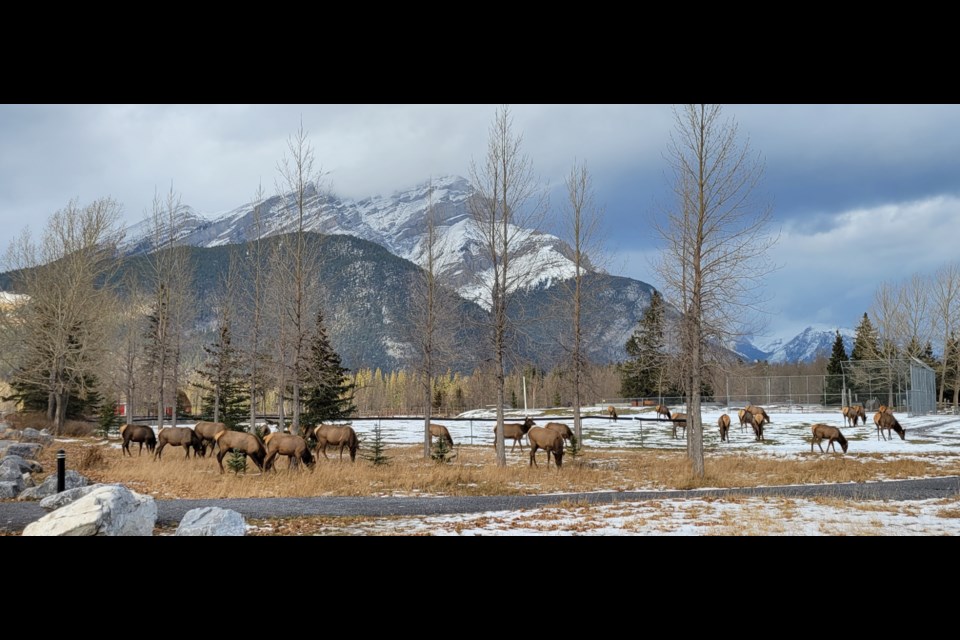Banff’s elk population has been declining for the past several years, but saw a slight uptick in 2023.
One of two annual surveys in the lower Bow Valley between Castle Mountain and the east gate of Banff National Park, the fall classified count tally was 156 elk this year. That compares to 139 elk in 2022, 171 in 2021, 212 in 2020, 249 in 2019 and 267 in 2018.
“It’s not a lot, but it’s a slight uptick here, and before this we’d seen a five-year decline,” said Blair Fyten, human-wildlife coexistence specialist for Banff National Park.
“They were getting down in numbers where, you know, obviously we were concerned.”
The elk strategy for the Bow Valley has a healthy population target of between 150 and 300 individuals for ecological and public safety reasons.
Last year, the cow-calf ratio was 42 per cent, but this year it grew to 57 per cent, meaning out of 100 cows, 57 per cent had calves.
“That calf recruitment is fairly high from our average, but that’s kind of a direct reflection on predation, and perhaps weather in the spring,” said Fyten.
“With the high cow-calf ratio, that’s a good thing because our elk numbers should start to rebound a little bit.”
The Bow Valley wolf pack is estimated to have six adults and eight pups, but more recent sightings in the past couple of weeks indicate only 10 wolves. Remote camera footage shows there are four adult wolves and two pups in the new Fairholme pack.
“When we talk about predation, we have a fairly healthy Bow Valley pack and that could put a dent in the herd," said Fyten.
"Those female cows are most important because they’re the ones that are going to produce calves."
When wolf numbers are healthy, Fyten said elk tend to move closer to the townsite to seek refuge from predators.
He said Parks Canada does patrols for elk in town every day.
“We’re still actively involved in trying to keep the elk out of the townsite,” he said.
“Sometimes it's challenging and we still get elk coming into the town and looking for some of that non-native vegetation.”
Parks Canada has recorded 20 confirmed elk mortalities this year, including three from disease, six from road and railway hits, and five were unknown because the cause of death could not be determined.
In addition, there were six killed as a result of predation.
“That's not high predation, but you know when the wolves kill something, then you know it's out in the bush and we never find it,” said Fyten.
The three killed from disease were confirmed to be acute clostridial bacterial, which is caused by anaerobic bacteria that is widespread in the environment, particularly in soil, and can be fatal.
“We found one a couple of weeks ago; that one was down on the golf course,” said Fyten, noting the cause of death was confirmed via necropsy – a surgical examination of dead animals.
Parks Canada reminds people to keep their distance from elk.
“Even though they look fairly benign and somewhat tame, they can be provoked to charge, especially at individuals that are out with dogs because dogs might look like a predator,” said Fyten.
“We say for elk a minimum 30 metres, but I like to stretch that out a little bit more because sometimes that can be a little close, especially if they're crowded and feeling threatened.”
Parks Canada asks that any elk sightings in the townsite be reported to Banff National Park dispatch at 403-762-1470.



